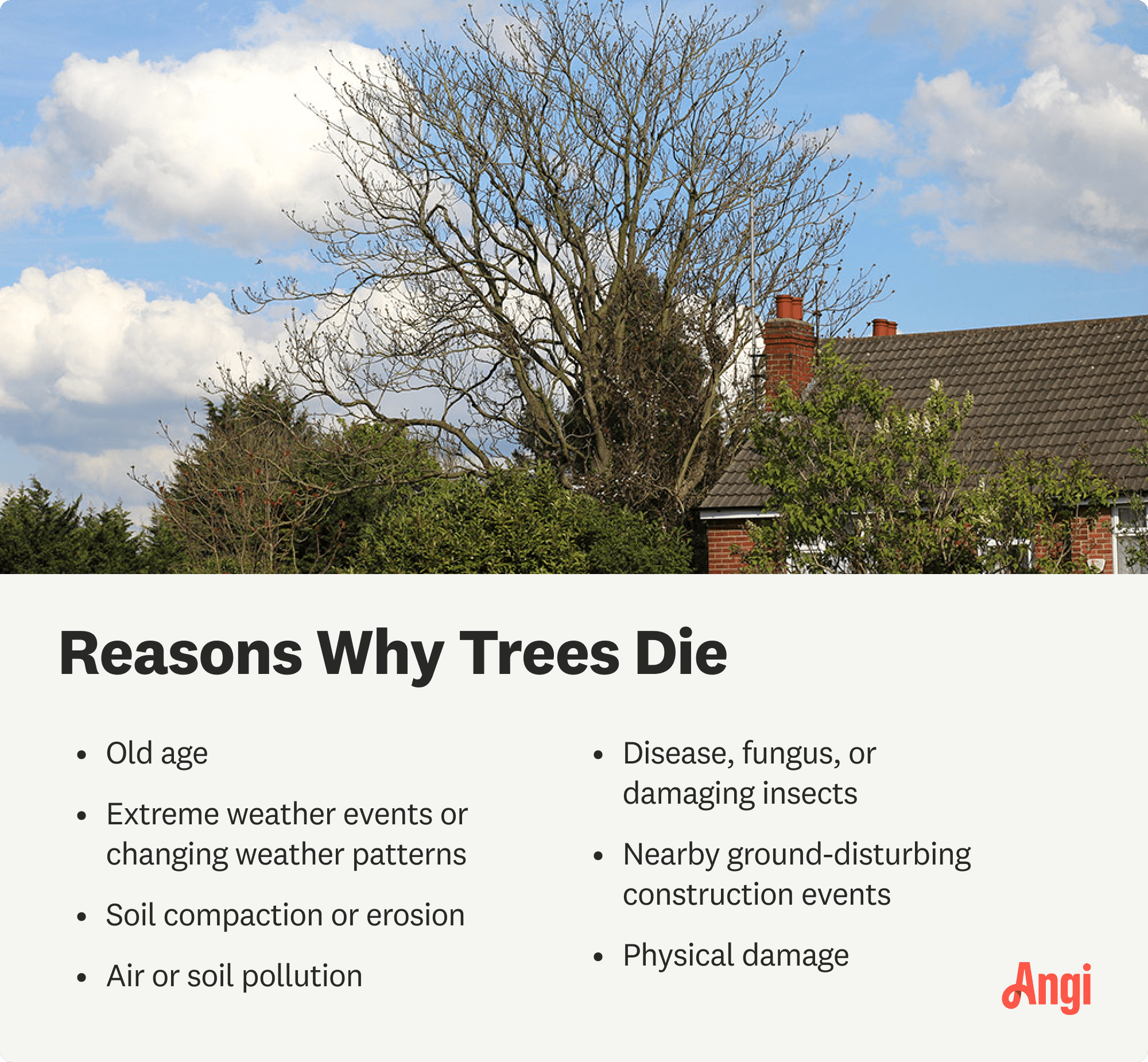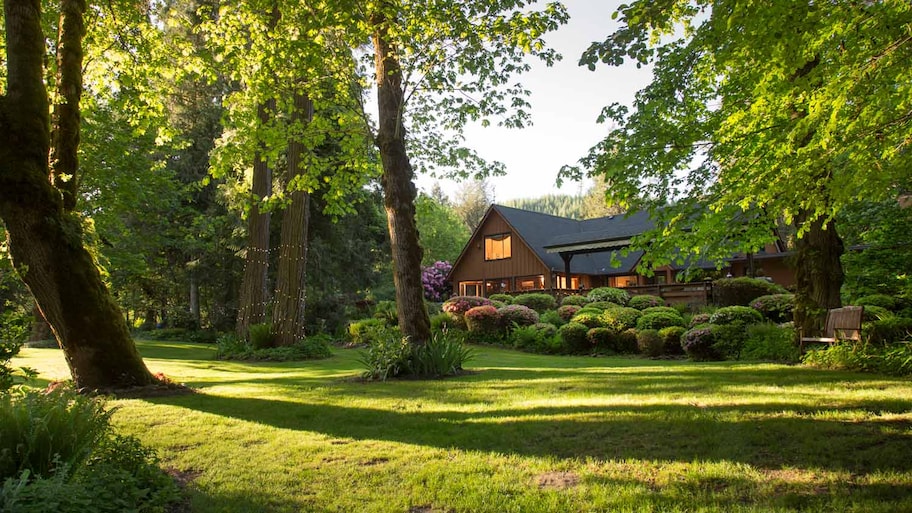Holes in Trees: Hazardous or Harmless?
Let these helpful tree care tips be your ace in the hole


Insects, birds, and squirrels can cause tiny holes.
Fungi can hollow out a tree, but it’s not always an issue.
Healthy trees usually heal small holes on their own.
Arborists usually won’t patch a hole in a tree.
The best way to handle a hole is to focus on general tree care.
It may be alarming to look up and notice there’s a hole in the trunk of your favorite tree. Several culprits can cause large holes in tree trunks. Sometimes, it’s a natural part of aging (akin to a receding hairline). Other times, it’s more like a paper cut, broken bone, or an illness. Your tree can heal with the right tree care—you just need to know the source of the problem.
So, what does a hole in your tree mean and how should you handle it? Let’s take a look at six common problems.

Are Holes in Trunks Bad for Trees?
Small, medium, and large holes in the trunks of your trees are not a good sign, though the severity of the issue is usually determined by their size, number of holes, and how the holes are arranged.
Size
The bigger the hole, the more likely your tree is being impacted by a pest or an animal. Large holes in trees can compromise the structure of the tree and lead to deterioration of the tree over time. You can prevent infestation from pests like wood-boring beetles or woodpeckers by hiring a local tree maintenance pro to treat the tree with pesticide or a similar solution.
Amount
A few random holes in your tree trunk may not mean your tree is on the brink of death. However, more holes indicate an invasive species of insects that are attracted to the smell of your tree’s cycle of decline. If you have several holes in one or multiple trees, it may be time to consult the experts.
Arrangement
The pattern of the holes also plays a part in identifying what type of insect or animal is the culprit. Holes in a direct line are likely the work of sapsucker woodpeckers, while random, ragged holes are caused by both insects and woodpeckers. Random small holes, on the other hand, are most often a result of insects boring into the tree.
Top Causes of Large Holes in Tree Trunks
1. Wood-Boring Insects
Does your tree have a series of tiny holes? This could be the result of wood-boring insects like moths or beetles. There are thousands of wood-boring insect species, but it’s typically the larvae that feed inside the tree. Mature moths and beetles tend to feed on the foliage, and holes are usually created as an entrance or exit point.
A large infestation can dramatically damage your tree beyond repair. If there are lots of tiny holes, you may want to remove your old one and plant a new tree. If the damage isn’t too bad, you can fend off insects by ramping up tree care, such as:
Adding mulch around the soil
Fertilizing
Watering
Pruning damaged areas
Hiring a local pest exterminator who specializes in trees
2. Squirrels
Squirrels like to build their nests in tree hollows, but this is usually a symptom of a larger problem. They don't generally create the holes. Rather, they utilize existing holes. Squirrels also tend to gnaw at weak areas where the bark has already rotted on the tree trunk or a limb has fallen from the tree (they love the taste of that sweet, sweet sap!).
It's notoriously difficult to keep squirrels out of your yard, but you can try wrapping the base of young trees in chicken wire to prevent them from digging into the bark. You can also spray trees with squirrel repellent (capsaicin hurts them the same way it hurts us). Overall, squirrel damage is rare, and the best defense is growing the healthiest tree possible.
3. Woodpeckers and Sapsuckers

Woodpeckers and sapsuckers chip away at tree bark to access the sap and insects inside. The good news is that birds don’t usually kill trees, but they can weaken them. Like with squirrels, the best way to deter bird-related damage is to grow a healthy tree. You can also try fending the critters off with:
Bird netting
Statues of natural predators like owls and eagles
Aluminum foil
Reflective tape
Colorful flags or pinwheels
4. Fungi
If you have a fungus problem, you may notice mushrooms growing out of the soil over the root ball. Fungi cause some of the most common tree diseases. An issue like powdery mildew and white pine blister rust can quickly spread across your whole backyard—but the good news is that some fungal infections are totally benign. A certified arborist near you will know the difference and can help you create a treatment plan. Sometimes, this involves pruning the affected area or applying an antifungal spray.
5. Aging Trees
As long as you don’t notice an infestation of beetles, a disease, or significant damage elsewhere on the tree or roots, a hollow trunk may not be anything to worry about. In fact, some hollow trees stand for centuries. The truth is that large, round holes can be a natural part of aging.
As long as the structural integrity remains intact, hollowing can extend your tree’s life span. This happens when fungi break down your tree’s deadwood core. This part of the tree isn’t living, but it’s loaded with stored nutrients. These nutrients are absorbed by the living outer layers of your tree, effectively fertilizing from within.
6. Cracks or Splits
A crack or split may look like a hole, but it's not the same thing. These pose a structural risk and worsen as trees move in the wind. In this case, you'll need professional intervention—the sooner, the better to prevent further damage.
When to Fill Holes in Trees
It used to be common practice for arborists to fill large holes with cement, but this damages your tree in the long run. Most of the time, you won’t want to fill a hole in a tree unless you notice standing water that can lead to rot or house mosquitos. In this case, an arborist will opt for a flexible waterproof latex spray that moves as the tree grows (like spray insulation). Most small holes will heal on their own as long as your tree is healthy.
Sometimes, hollowing poses a structural problem. In this case, you’ll need to take measures to prevent further damage. An arborist generally won’t fill the cavity. Instead, they’ll utilize tactics like:
Pruning
Bracing
Propping
Anchoring
Cabling
If the underlying problem can't be fixed, you may need to remove the tree. But most of the time, strengthening your tree's health does the trick.
Cost to Fill Tree Holes
The cost to have an arborist assess and treat large holes in tree trunks will depend on your location, the number of trees that require attention, and whether you have other tree-related issues that need addressing. On average, the cost to hire an arborist starts at about $100 to $250.
When to Call a Professional
Generally speaking, a hole in a tree isn’t very concerning. The essential outer layers are still protected from the type of rot that hollows the core. Nonetheless, you should still hire a local tree maintenance service to ensure your tree's outer layers are healthy and that your tree is structurally sound. A pro will inspect your tree using special tools that test its strength. Once they diagnose the problem, they’ll be able to offer a customized treatment plan.





- When To Cut Down A Tree: 13 Ways To Tell
- Transplanting Large Trees? Here's How to Do It Safely
- How to Straighten a Tree That’s Leaning in Your Yard
- How to Save a Dying Tree: 8 Tips to Try
- How to Repair a Damaged Tree Trunk
- Who Do I Hire to Spray My Trees? A Complete Guide
- Who Should I Call for a Sick Tree?
- 7 Reasons Why You Shouldn't Plant a Tree in Your Yard
- How to Remove a Tree Yourself
- All Good in the Wood: Top 5 Signs of a Healthy Tree















